#german cast 1999
Text


⠀⠀𝕷𝔬𝖗𝔢𝖑𝔞𝖎 𝕱𝔩𝖊𝔱𝖈𝔥𝖊𝔯
Most witches are born with the natural gift of being bound to one of the four elements — fire, water, earth and air; I, on the other hand, was born with two— born to destroy and recreate, to control flames and bend waves equally; I am a Blood Witch, gained my powers by birthright to nourish and harvest them in sacrificial rituals; the descent of my family dates back to the days of Salem, where my ancestors fled to Scotland after being disgraced and cast out by the Earth Witches who used earth binding rituals instead of sacrificing humans; but why is blood so important, you ask yourself? because nothing holds more power than a soul — and our blood and our tears are a souls essence; its very own fragrance, like perfume, so powerful and pure — that is, if it isn’t tainted like mine; I have no connection to God, Satan is my father to judge. ⠀⠀ ⠀⠀
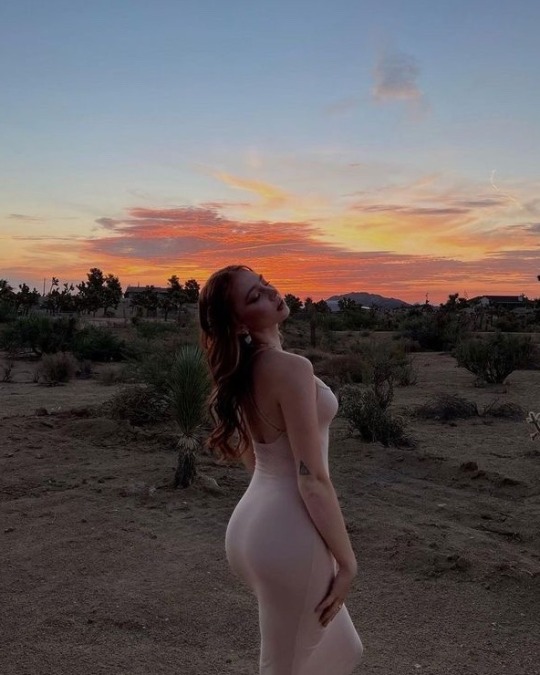


I was born on April 30th 1999, at 11:54pm, a perfect little witch taking her first breath on the holy Walpurgis Night in Broomridge, Stirling, Scotland; I was born at home, no siblings, my Daddy left when he realised that I was different. My mother taught me everything I know about being a witch, from the age of twelve up to now — or at least until she was killed this May; Witch Hunters had found their way into our home at night, killed mother in her sleep, but I was up before they knew it; I let the first one go up in flames while I drowned the other in the sink; right before I held my dying mother in my arms — every day and every night I see her bloody face in front of me, hear her last words echoing in my head, begging me: “Avenge me, my mad child.”
And that is exactly what I will do.



⠀⠀ ⠀⠀ plotters welcome (german preferred) ⠀⠀ ⠀⠀ ⠀ conversation & smalltalk also welcome
⠀⠀ ⠀⠀⠀ PLEASE STAY IN CHARACTER
#userfakevz#supernatural#21+ only#eng/ger#witch#dark#about; mad witch – bad witch#appearance; i put a spell on you#r: single/bi
50 notes
·
View notes
Text



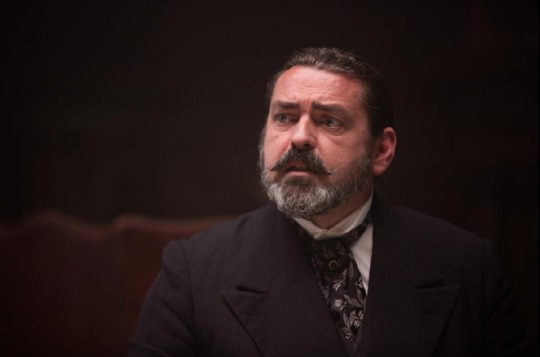
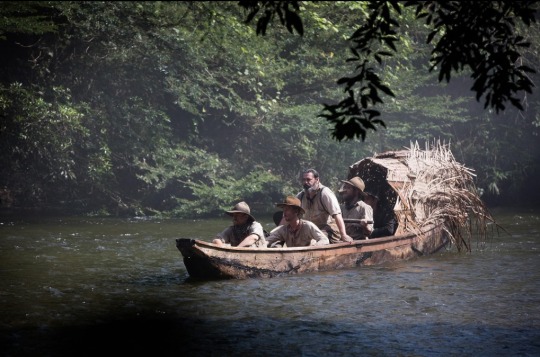
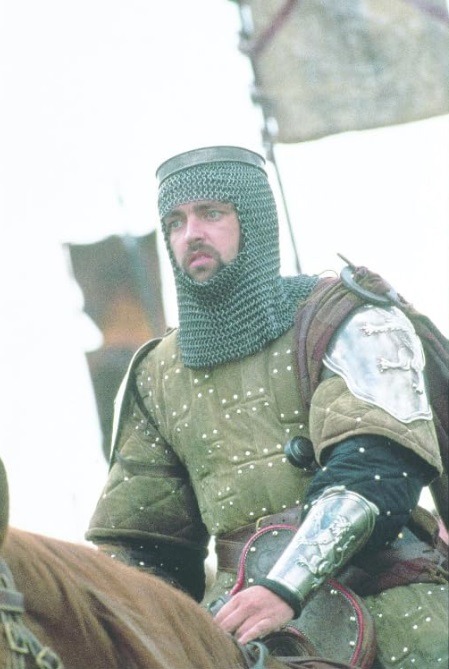



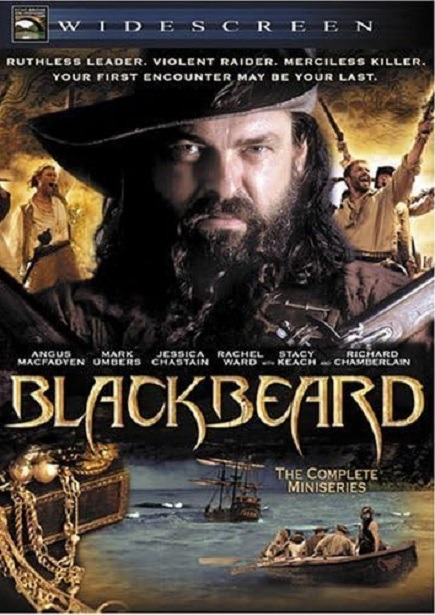
Happy Birthday Scottish actor Angus Macfadyen born 21st September 1963 in Glasgow.
MacFadyen had a nomadic upbringing; thanks to his father’s job with the World Health Organization, he spent his childhood and adolescence in places no less diverse than Africa, Australia, France, the Philippines, Singapore, and Denmark. He went on to attend the University of Edinburgh and received theatrical training at the Central School of Speech and Drama. MacFadyen got his professional start on the Edinburgh stage, appearing in a number of productions at the famed Fringe Festival.
Breaking into television in the early ‘90s, Angus appeared in a number of series for the BBC, including an acclaimed adaptation of David Leavitt’s The Lost Language of Cranes. Following the critical and commercial success of Braveheart, the actor got a rudimentary dose of recognition across the Atlantic, but remained largely unknown outside of the U.K. He starred with Gabriel Byrne and Bill Campbell in the World War II drama The Brylcreem Boys in 1996, playing a German pilot being held captive in neutral Ireland. Until 1998, when he portrayed Peter Lawford in the made-for-cable The Rat Pack, MacFadyen’s other screen appearances tended to be in films that were widely ignored by audiences and critics alike.
He has played Orson Welles in Tim Robbins’ 1999 film, Cradle Will Rock, Philip in the BBC’s production of The Lost Language of Cranes, Dupont in Equilibrium and Jeff Denlon in the Saw series of films
Some of you might remember Angus in the excellent Takin’ Over the Asylum which also starred two great actors in Ken Stott and David Tennant. We last say him on the big screen in very underrated The Lost City of Z
Angus reprised his role of The Bruce last year in Robert the Bruce, among the co-stars, playing his wife Elizabeth de Burgh is Mhairi Calvey, who aged just 5 was ‘Young Murron’ in Braveheart. While I enjoyed the film, I thought that maybe the role of The Bruce was maybe better suited to a younger actor, but it was his “baby”, and he strived for years to get the film made.
He also appeared in the TV series Strange Angel, about a rocket scientist in 1940s Los Angeles is secretly the disciple of occultist Aleister Crowley, played by our man. I have yet to see this, but must look it up. The series was canceled after two seasons.
Angus is currently part of the Outlander cast playing a Redcoat Brigadier-General, he has no less than five projects on the burner at the moment, the pic of which, for us Scots is probably a movie called The Last Redemption, which also satrs the popular James Cosmo.
34 notes
·
View notes
Text
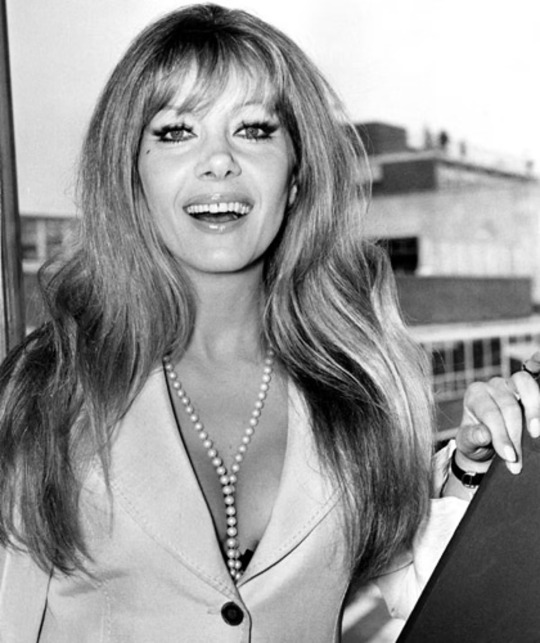
Celebrating Ingrid Pitt
Ingrid Pitt (born Ingoushka Petrov; 21 November 1937 – 23 November 2010) was a Polish-British actress and writer best known for her work in horror films of the 1970s.
Ingoushka Petrov was born in Warsaw, Poland, one of two daughters of a father of German Jewish descent and a Polish Jewish mother. During World War II, she and her mother were imprisoned in Stutthof concentration camp in Sztutowo, Free City of Danzig (present-day Nowy Dwór Gdański County, Pomeranian Voivodeship, Poland) but escaped. In Berlin, in the 1950s, Ingoushka married an American soldier, Laud Roland Pitt Jr., and moved to California. After her marriage failed she returned to Europe, but after a small role in a film, she took the shortened stage name "Ingrid Pitt", keeping her former husband's surname, and headed to Hollywood, where she worked as a waitress while trying to make a career in films.
In the early 1960s, Pitt was a member of the prestigious Berliner Ensemble, under the guidance of Bertolt Brecht's widow Helene Weigel. In 1965, she made her film debut in Doctor Zhivago, playing a minor role. In 1968, she co-starred in the low-budget science-fiction film The Omegans, and in the same year, played British spy Heidi Schmidt in Where Eagles Dare opposite Richard Burton and Clint Eastwood.

Her work with Hammer Film Productions elevated her to cult figure status. She starred as Carmilla/Mircalla in The Vampire Lovers (1970), based on Joseph Sheridan Le Fanu's novella Carmilla, and played the title role in Countess Dracula (1971), based on the legends about Countess Elizabeth Báthory. Pitt also appeared in the Amicus horror anthology film The House That Dripped Blood (1971) and had a small part in The Wicker Man (1973).

During the 1980s, Pitt returned to mainstream films and television. Her role as Fraulein Baum in the 1981 BBC Playhouse Unity, who is denounced as a Jew by Unity Mitford (Lesley-Anne Down), was uncomfortably close to her real-life experiences. Her popularity with horror film buffs had her in demand for guest appearances at horror conventions and film festivals. Other films in which Pitt has appeared outside the horror genre are: Who Dares Wins (1982) (or The Final Option), Wild Geese II (1985) and Hanna's War (1988). Generally cast as a villainess, her characters often died horribly at the end of the final reel. "Being the anti-hero is great – they are always roles you can get your teeth into."

In the 1980s she also reinvented herself as a writer. Her first book, after a number of ill-fated tracts on the plight of Native Americans, was the 1980 novel, Cuckoo Run, a spy story about mistaken identity. "I took it to Cubby Broccoli. It was about a woman called Nina Dalton who is pursued across South America in the mistaken belief that she is a spy. Cubby said it was a female Bond. He was being very kind."
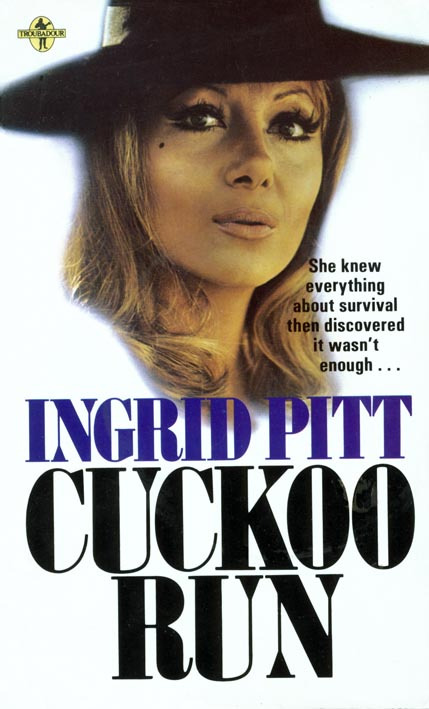
In 1999, her autobiography, Life's a Scream (Heinemann) was published, and she was short-listed for the for her own reading of extracts from the audio book.
The autobiography detailed the harrowing experiences of her early life—in a Nazi concentration camp, her search through Europe in Red Cross refugee camps for her father, and her escape from East Berlin, one step ahead of the Volkspolizei. "I always had a big mouth and used to go on about the political schooling interrupting my quest for thespian glory. I used to think like that. Not good in a police state."

Pitt died in a south London hospital on 23 November 2010, a few days after collapsing, and two days after her 73rd birthday, from congestive heart failure.

Seven months before she died, Pitt finished narration for Ingrid Pitt: Beyond the Forest (2011), an animated short film on her experience in the Holocaust, a project that had been in the works for five years. Character design and storyboards were created by two-time Academy Award-nominated filmmaker Bill Plympton. The film is directed by Kevin Sean Michaels; co-produced and co-written by Jud Newborn, Holocaust expert and author, "Sophie Scholl and the White Rose"; and drawn by 10-year-old animator, Perry Chen.
vimeo
#Ingrid Pitt#The Vampire Lovers#Countess Dracula#Academy Award#Anne Frank#Holocaust#Nazi#Where Eagles Dare#Kevin Sean Michaels#Hammer Films#The Wicker Man#The House That Dripped Blood#concentration camp#Stutthof concentration camp
122 notes
·
View notes
Text

“If Shirley Stoler shows up in something you’re watching, chances are at the very least it’s not going to be boring - and she shows up in the damndest places, impossible to ignore when she shoulders her way on-screen. There she is, for example, dubbed into Italian to play the zaftig commandant in a German concentration camp in Lina Wertmüller’s Seven Beauties (1975), where she’s serviced by prisoner Giancarlo Giannini. And as nasty neighbor Mrs. Steve on the television show Pee-wee’s Playhouse, a toxic character axed after the first season in 1986, apparently because Stoler so rubbed Paul Reubens the wrong way. And in Frank Henenlotter’s Frankenhooker (1990), of which little more needs be said than it’s titled Frankenhooker. And as the pawnshop proprietress who whacks off Alec Baldwin’s digits in Miami Blues (1990), George Armitage’s adaptation of Charles Willeford’s blackly comic detective novel, in which her casting, per Armitage, was a homage to her breakthrough role in The Honeymoon Killers (1969), Leonard Kastle’s road trip through an all-American hellscape.”
/ From “All-American Medea: Shirley Stoler in The Honeymoon Killers”, Nick Pinkerton’s astute essay for The Criterion Collection, 22 March 2017 /
Born on this day: fiercely charismatic, menacing and memorable American character actress Shirley Stoler (30 March 1929 – 17 February 1999). If all Stoler did was star in vicious 1969 cult classic The Honeymoon Killers, her legacy would be secure. In addition to the credits Pinkerton cites above, she also crops up in Klute (1971), The Deer Hunter (1978) and Desperately Seeking Susan (1985) and (on TV) Charlies Angels, Miami Blues and soap operas The Edge of Night and One Life to Live. What a résumé! A persistent urban myth: that Shirley Kilpatrick – leading lady of el cheapo sci fi b-movie The Astounding She-Monster (1957) - and Stoler are one and the same person. To complicate things considerably: Kilpatrick died in 1971. Portrait of Stoler by John Deane.
#shirley stoler#john deane#lobotomy room#character actress#cult cinema#cult classic#the honeymoon killers#pee wee's playhouse#seven beauties#frankenhooker#desperately seeking susan#klute#charlie's angels#shirley kilpatrick#fierce
7 notes
·
View notes
Text
'Patricia Highsmith (1921-1995) was the author largely of books ubiquitously described as psychological thrillers, but the adjective is doing much more work than it usually does in such descriptions. The psychological depths tend to be far deeper than just a worry about being caught for assorted misdeeds. It’s no surprise that her works have proven appealing to all sorts of directors. When your first novel is adapted a year after publication by Alfred Hitchcock, you know you’re doing something right. Strangers on a Train is about much more than just a macabre plan. Wim Wenders’s The American Friend, Claude Chabrol’s The Cry of the Owl, and Todd Haynes’s Carol are all very good.
Tom Ripley is Highsmith’s best-known creation. Turning a Henry James plot into pulp fiction is not the sort of thing that’s usually advisable, but she did it extraordinarily well. The plot of The Ambassadors, an industrialist hiring a man to seek to induce her son to return to America from expat indolence, is cribbed here as a foundation. The James protagonist finds Europe much to his liking, as does Highsmith’s Ripley. When the European idyll is threatened, Ripley has a novel thought: Why not bump the young scion off and take his place?
This sounds like a preposterous plan to execute. And it is! That’s why it’s entirely engrossing. Her aim was, she wrote, “showing the unequivocal triumph of evil over good, and rejoicing in it. I shall make my readers rejoice in it, too.” Netflix‘s new series, Ripley, succeeds in replicating exactly this feat.
The trouble with prior screen adaptations of Highsmith’s Ripley stories has been that he’s always been made far too pleasant. If René Clément’s French language 1960 Purple Noon and Anthony Minghella’s star-studded 1999 The Talented Mr. Ripley are both credible adaptations in their own way, there’s something askew about both matinee idol Alain Delon or effortless everyman Matt Damon as Tom Ripley. Dennis Hopper and John Malkovich both had elements of the Ripley persona down in adaptations of later novels (Barry Pepper did not), but there still seemed to be elements of the portrait missing.
I’m sure I’m not the only reader to find the versatile con man who appears across five Highsmith novels initially repellent. He is not enthusiastic, loathing nearly all of the effort involved in his cons. And he is not loquacious or charismatic as we might expect from a grifter. In almost his very first deception at the start of The Talented Mr. Ripley (the subject of this adaptation), he himself notices the cracks in his crocodile grin: “When he looked into the mirror, he found that his face had turned down at the corners.” Most frauds will say nearly anything to wheedle their way into favor. Talk is normally very cheap when you have no regard for truth. Ripley can’t bring himself to muster more than the mildest of faint praise for execrable paintings by his main mark. Almost every decent person has told white lies with less hesitation.
Things are different in Ripley, the best adaptation of the novel to date, thanks in considerable part to the casting of Andrew Scott (familiar from a variety of things but most germane to this particular role as Moriarty in the BBC Sherlock series) as Ripley. Scott telegraphs unease and strain with great facility. Sometimes, he’s vaguely normally personable. At many other points, his strained effort seems entirely transparent. This sort of calibration captures in excellent fashion the frank distaste that Ripley feels for almost everyone in the source material, a difficult thing to pull off in a book largely composed of his own train of thought. He is terrifically bored by most of his targets and doesn’t work all that hard to conceal the fact. He succeeds somehow with most people. It’s reliably a surprise that only a few see through him.
If the promise of streaming television has been tarnished by countless long-winded series that have no idea how to pace themselves or end, this one makes excellent use of an eight-episode frame to tell the tale of the novel basically in full. Prior adaptations simply couldn’t do that within a feature film length. Purple Noon opens in media res. The Talented Mr. Ripley condenses a number of things. There are some minor emendations, most of which are actively good and almost all at least forgivable.
The book dedicates an enormous amount of time to Ripley’s scheming and improvising. His plans are usually not airtight. Much of the riveting character of the book is how easily he might be caught at almost any moment. A number of sequences whose dramatic tension is contained in their great length are presented in white knuckle effulgence here. Two very lengthy corpse disposals are engrossing. Conversations are lengthy, full of pregnant pauses. There’s even high drama wrought out of multiple bank scenes in which we find Tom feloniously drawing funds.
Steven Zaillian, who wrote the screenplays for Schindler’s List, The Gangs of New York, and The Irishman, provides an excellent script and credible direction. The work of cinematographer Robert Elswit (whose credits include There Will Be Blood) is great. Ripley’s early miserable life in New York is presented well. The tenements are squalid and subways sweltering. La Dolce Vita-era Italy looks all the more rapturous afterward, with shadows and light in various palazzi motivating almost anyone to murder. Locations across south Italy, Capri, and Venice are excellent.
Casting beyond Ripley himself is very strong. Johnny Flynn’s Dickie Greenleaf is a perfect, vaguely dim, but charismatic offspring of privilege. Maurizio Lombardi, perhaps familiar as a cardinal in The Young Pope, is a very strong inspector on the case. Playwright Kenneth Lonergan (who also co-wrote The Gangs of New York) is an ideal Herbert Greenleaf. The casting of Freddie Miles is one substantial deviation, here not the churlish porker of the novel (Philip Seymour Hoffman was about ideal) but rather an androgynous proto-Eurotrash wisp. Dakota Fanning’s Marge Sherwood, Dickie Greenleaf’s tedious paramour, is rendered more truly than any prior. She’s no stunning beauty but a rather average girl in “naive clothes” with “windblown hair and her general air of a Girl Scout.”
Now, Ripley is not exactly a fan of any women if Marge is particularly low on the list. Ripley is very deliberately rendered as sort of gay in the novel. He finds Dickie handsome and Marge repulsive. At a key juncture, he notes he “could have hit Dickie, sprung on him, or kissed him, or thrown him overboard.” This is not the range of options most people consider in a social dilemma, no matter their sexual orientation. Purple Noon basically omitted this element, while The Talented Mr. Ripley camped it up. Ripley replicates the novel’s deliberate ambiguity. He seems devoid of almost any active sexuality and likes almost no one, with exceptions for a handful of men.
What Ripley does like are the finer things in life. He thrills to travel, fine clothing, beautiful objects, and art. These things receive all sorts of close cinematic attention. There is a Hitchcockian cinematic focus on pens, an ashtray, and other talismans of the good life (that also might be used to kill).
Ripley contains a cameo from Malkovich (who portrayed Ripley in another earlier adaptation, Ripley’s Game) as a character from the next novel, and Zaillian optioned all five Ripley novels. Let’s hope that the viewers stream in, as it would be nice to see more of this Ripley.'
#Patricia Highsmith#The Talented Mr Ripley#Steven Zaillian#Ripley#Netflix#Andrew Scott#John Malkovich#Ripley's Game#Anthony Minghella#Purple Noon#Matt Damon#Dennis Hopper#Alain Delon#Sherlock#Moriarty#Freddie Miles#Eliot Sumner#Dickie Greenleaf#Johnny Flynn#Dakota Fanning#Marge Sherwood#Robert Elswit#Kenneth Lonergan#Maurizio Lombardi#Inspector Ravini#Philip Seymour Hoffman
5 notes
·
View notes
Text
2023 in Films
I watched way too many films this year. Here are my opinions on some of them
January
Las Cosas Del Querer (1989) - Amazing if you love sad hot people and flamenco
Canadian Bacon (1995) - Incredibly silly and Alan Alda plays the US president
Nope (2022) - A highlight of the year
February
Hellraiser (1987) - This film is actually about miscommunication in this essay I will-
Predestination (2014) - Time Travel and Gender Moments
Malignant (2021) - Camp horror masterwork
Late Phases (2014) - Mediocre werewolf film with some really interesting comments on ageism, ableism, suburbia and religion
March
Sterne (1959) - Plays into some problematic stereotypes from today's perspective but revolutionary for its time, first German film to address the Holocaust
Major League (1989) - A film I only watched to confirm that it uses a weird phrase I also found in my thesis project
Carry On Screaming (1966) - Camp. Gay. Horror. Parody.
Glen or Glenda (1953) - A product of its time and no longer up to date in its understanding of gender but surprisingly revolutionary in its compassion and earnestness despite the bad reviews
April
Taxi Driver (1976) - Isn't it frustrating when annoying people tell you a film is good and then it's actually good?
June
Mr Deeds Goes To Town (1936) - Mr Deeds has autism swag
El Espíritu de la Colmena (1973) - I really wanted to like this because civil war era Spain and Frankenstein are super up my alley but unfortunately it was so much slower than expected
Das Boot (1981) - Very long and claustrophobic but holds up to the hype
Weird: The Al Yankovic Story (2022) - RIP King
July
Nimona (2023) - His big wet eyes bewitched me
First Blood (1982) - You're telling me the film is about Americans fighting an enemy they view as simultaneously weak and dangerous, escalating the situation, and then sending more and more men into a rainforest to die through guerilla warfare after being warned again and again they can't win this? sounds familiar
Barbie (2023) - Insert a bunch of pink emojis
Everything Everywhere All at Once (2022) - Made me crave bagels
Jojo Rabbit (2019) - God I love war satires
Sweet Liberty (1986) - Alan Alda having fun and also using his own film as a therapy session
The Majestic (2001) - A rewatch but it's so tragically underrated, Jim Carrey is very good in dramatic roles and McCarthy-era media is like catnip for me
Joker (2019) - This is just Taxi Driver with extra steps
August
Tin & Tina (2023) - Probably one of the worst films I have seen in a while
Battle of the Sexes (2017) - I love women
Four Lions (2010) - The ending really got me, I love when satire gets serious
The Sheriff and the Satellite Kid (1979) - Can we talk about how the theme song is just going "I'm the sheriff" "yes you're the sheriff"
Happiness (1998) - Nauseating but in a "good film but what the fuck" way
They Call Him Bulldozer (1978) - Italian Lagaan
The Talented Mr Ripley (1999) - Sad and Gay
Twister (1996) - So much better than expected
Magnolia (1999) - Cloudy with a chance of frogs, a really long but really good film and I'm not entirely sure I got it
Doubt (2008) - Somehow I watched 5 films with Philip Seymour Hoffman that month because I was haunted by his ghost or something
September
The Terminal (2004) - I assumed this to be more of a classic romcom but the whole concept (based on a true story) is so terrifying and tragic that it made me feel all emotions at once
Apocalypse Now (1979) - I knew a lot of trivia about the film but for some reason I didn't know anything about the cast so every single actor was a surprise and made me go "!!!", Also I kinda wanna write an essay about it
October
Bloodbath at the House of Death (1984) - Some of the gay jokes absolutely killed me
Last Night in Soho (2021) - I'm Not Like the Other Girls to Time Travel Murder Nightmare Pipeline, actually I really enjoyed this one but it's also super silly
The Banshees of Inisherin (2022) - How do you say poor little meow meow in gaeilge
The Menu (2022) - I go to the murder restaurant I order the beesechurger, I was super surprised there's no cannibalism but tbh that would have been low hanging fruit
The Eyes of Tammy Faye (2021) - Explains a lot about religion in the US, I love that she was pro lgbt, also I googled her ex husband and he has a prepper/survivalist thing going on now and scams more people
The Darjeeling Limited (2007) - we can't eat pray love ourselves out of this one boys
Holes (2003) - Hated the book as a teenager for school reasons but gave the film a try and really enjoyed it
Renfield (2023) - I expected werewolves but I enjoyed it nevertheless, My Chemical Romance is on the soundtrack, it's very silly, the effects are great
Interview with the Vampire (1994) - Oh people weren't lying about it being homoerotic
The Big Lebowski (1998) - I've had days that feel like that
November
Pappa ante Portas (1991) - Funnier now that I'm an adult, basically half the jokes my mum makes are from this film
The Meg 2: The Trench (2023) - I watched this while sick and really wanted to see a giant shark fight a giant octopus and boy did it deliver
Puss in Boots: The Last Wish (2022) - Very nice animation style
JFK (1991) - I actually fell asleep halfway through because it's so long but can we talk about how this film is just A-listers but has some of the worst wigs and makeup I've seen
Bottoms (2023) - A spiritual sequel to Heathers
December
When Harry Met Sally (1989) - They deserve each other (derogatory) but that one restaurant scene was pretty funny
The Royal Nanny (2022) - one of the many Hallmark films my mum made me watch and this is perhaps the worst one, incredibly sexist even for a Hallmark film and they clearly mean Mi5 but say Mi7 which was a WW2 propaganda service? Also they really want me to believe there is a British prince called Colin and that he doesn't look like his family tree is a circle?
I forgot the title but there was also the one where two people get stuck in a time loop while trying to make a sponsored youtube video about baking and I didn't really pay attention much but man that was bad
15 notes
·
View notes
Text
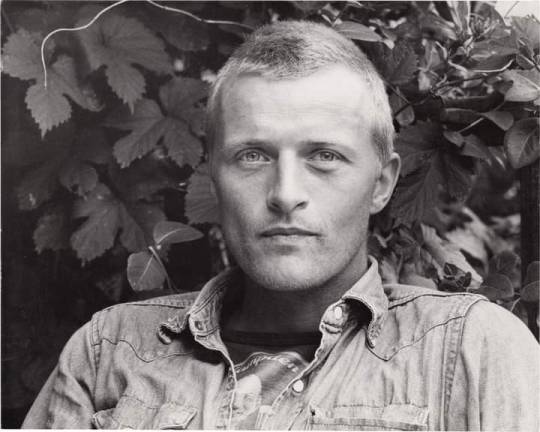
In MEMORY of RUTGER HAUER on his BIRTHDAY - (January 23, 1944 - July 19, 2019)
Career years: 1969 - his death
Born Rutger Oelsen Hauer, Dutch actor. In 1999, he was named by the Dutch public as the Best Dutch Actor of the Century.
Hauer's career began in 1969 with the title role in the Dutch television series Floris and surged with his leading role in Turkish Delight (1973), which in 1999 was named the Best Dutch Film of the Century. After gaining international recognition with Soldier of Orange (1977) and Spetters (1980), he moved into American films such as Nighthawks (1981) and Blade Runner (1982), starring in the latter as self-aware replicant Roy Batty. His performance in Blade Runner led to roles in The Osterman Weekend (1983), Ladyhawke (1985), The Hitcher (1986), The Legend of the Holy Drinker (1988), and Blind Fury (1989), among other films.
From the 1990s on, Hauer moved into low-budget films, and supporting roles in major films like Buffy the Vampire Slayer (1992), Confessions of a Dangerous Mind (2002), Batman Begins (2005), Sin City (2005), and The Rite (2011). Hauer also became well known for his work in commercials. Towards the end of his career, he made a return to Dutch cinema, and won the 2012 Rembrandt Award for Best Actor in recognition of his lead role in The Heineken Kidnapping (2011).
Hauer supported environmentalist causes and was a member of the Sea Shepherd Conservation Society. He also founded the Rutger Hauer Starfish Association, an AIDS awareness organization. He was made a knight in the Order of the Netherlands Lion in 2013.
Early life -
Hauer was born in Breukelen, in the Province of Utrecht, while the Netherlands was under German occupation during World War II. He stated in a 1981 interview, "I was born in the middle of the war, and I think for that reason I have deep roots in pacifism. Violence frightens me." His parents were Teunke (née Mellema) and Arend Hauer, both actors who operated an acting school in nearby Amsterdam. He had three sisters. According to Hauer, his parents were more interested in their art than their children. He did not have a close relationship with his father, and writer Erik Hazelhoff Roelfzema later became a father figure to Hauer after they met during the filming of Soldier of Orange.
Hauer attended a Rudolf Steiner school, as his parents wanted him to develop his creativity. At the age of 15, he left school to join the Dutch merchant navy. He spent a year travelling the world aboard a freighter, but was unable to become a captain due to his colourblindness. Returning home, he worked odd jobs while finishing his high school diploma at night. He then entered the Academy for Theater and Dance in Amsterdam for acting classes, but soon dropped out to join the Royal Netherlands Army. He received training as a combat medic, but left the service after a few months as he opposed the use of deadly weapons. He subsequently returned to acting school and graduated in 1967.
Career:
Early works -
Hauer had his first acting role at the age of 11, as Eurysakes in the play Ajax. After graduating from the Academy for Theater and Dance, he became a stage actor with the Toneelgroep Noorder Compagnie. Hauer made his screen debut in 1969 when Paul Verhoeven cast him in the lead role of the television series Floris, a Dutch medieval action drama. The role made him famous in his native country, and Hauer reprised his role for the 1975 German remake Floris von Rosemund.
Hauer's career changed course when Verhoeven cast him in Turkish Delight (1973), which received an Oscar nomination for best foreign-language film. The film found box office favour abroad and at home, and Hauer looked to appear in more international films. Within two years, Hauer made his English-language debut in the British film The Wilby Conspiracy (1975). Set in South Africa, the film was an action-drama with a focus on apartheid. Hauer's supporting role, however, was barely noticed in Hollywood, and he returned to Dutch films for several years. During this period, he made Katie Tippel (1975) and worked again with Verhoeven on Soldier of Orange (1977), and Spetters (1980). These two films paired Hauer with fellow Dutch actor Jeroen Krabbé. At the 1981 Netherlands Film Festival, Hauer received the Golden Calf for Best Actor for his overall body of work.
American breakthrough -
Hauer made his American debut in the Sylvester Stallone film Nighthawks (1981) as a psychopathic and cold-blooded terrorist named Wulfgar. With his sights set on a long-term career in Hollywood, Hauer worked with an accent coach in the early 1980s to develop a convincing American accent. Unafraid of controversial roles, he portrayed Albert Speer in the 1982 American Broadcasting Company production Inside the Third Reich. The same year, Hauer appeared in arguably his most famous and acclaimed role as the eccentric and violent but sympathetic antihero Roy Batty in Ridley Scott's 1982 science fiction thriller Blade Runner, in which he delivered the famous tears in rain monologue. Hauer composed parts of the monologue the evening prior to filming, "cutting away swathes of the original script before adding the speech’s poignant final line". He went on to play the adventurer courting Theresa Russell in Eureka (1983), investigative reporter opposite John Hurt in The Osterman Weekend (1983), hardened mercenary Martin in Flesh & Blood (1985), and knight paired with Michelle Pfeiffer in Ladyhawke (1985).
He appeared in The Hitcher (1986), in which he played a mysterious hitchhiker tormenting a lone motorist and murdering anyone in his way. He received the 1987 Golden Globe Award for Best Supporting Actor for his role in the television film Escape from Sobibor. At the height of Hauer's fame, he was set to be cast as RoboCop (1987), but Verhoeven, the film's director, considered his frame as too large to move comfortably in the character's suit. Also in 1987, Hauer starred as Nick Randall in Wanted: Dead or Alive as the descendant of the character played by Steve McQueen in the television series of the same name.
In 1988, he played a homeless man in Ermanno Olmi's The Legend of the Holy Drinker. This performance won Hauer the Best Actor award at the 1989 Seattle International Film Festival. Hauer was chosen to portray a blind martial artist superhero in Phillip Noyce's action film Blind Fury (1989). He initially struggled with the implausibility of the character, but learned to "unfocus my eyes, to react to smells and sounds" after meeting with blind judo practitioner Lynn Manning during his research for the role. Hauer returned to science fiction in 1989 with The Blood of Heroes, in which he played a gladiator in a post-apocalyptic world.
Commercials and later roles -
By the 1990s, Hauer was well known for his humorous Guinness commercials as well as his screen roles, which had increasingly involved low-budget films, such as Split Second (1992); The Beans of Egypt, Maine (1994); Omega Doom (1996) and New World Disorder (1999). In 1992, he appeared in the horror-comedy film Buffy the Vampire Slayer as the main antagonist vampire Lothos. He also appeared in the Kylie Minogue music video "On a Night Like This" (2000). During this time, Hauer acted in several British, Canadian and American television productions, including Amelia Earhart: The Final Flight (1994) as Earhart's navigator Fred Noonan, Fatherland (1994), Hostile Waters (1997), The Call of the Wild: Dog of the Yukon (1997), Merlin (1998), The 10th Kingdom (2000), Smallville (2003), Alias (2003), and Salem's Lot (2004).
Hauer played an assassin in Confessions of a Dangerous Mind (2003), a villainous cardinal with influential power in Sin City (2005) and a devious corporate executive running Wayne Enterprises in Batman Begins (2005). Also in 2005, he played the title role in Patrick Lussier's film Dracula III: Legacy. Seven years later, he portrayed the vampire hunter Abraham Van Helsing in Dario Argento's Dracula 3D. Hauer hosted the British reality television documentary Shock Treatment in 2005, and featured in Goal II: Living the Dream (2007) as Real Madrid coach Rudi Van der Merwe. He also recorded voice-overs for the British advertising campaign for the Danish butter brand Lurpak.
In 2008, Hauer received the Golden Calf Culture Prize for his contributions to Dutch cinema. The award recognised his work as an actor as well as his efforts to aid the development of young filmmakers and actors, through initiatives such as the Rutger Hauer Film Factory. In 2009, his role in avant-garde filmmaker Cyrus Frisch's Dazzle received positive reviews; it was described in Dutch press as "the most relevant Dutch film of the year". The same year, Hauer starred in the title role of Barbarossa, an Italian film directed by Renzo Martinelli. In April 2010, he was cast in the live action adaptation of the short and fictitious Grindhouse trailer Hobo with a Shotgun (2011). Hauer played Freddie Heineken in The Heineken Kidnapping (2011), for which he received the 2012 Rembrandt Award for Best Actor. Also in 2011, Hauer appeared in the supernatural horror film The Rite as an undertaker named Istvan, the protagonist's father.
From 2013 to 2014, Hauer featured as Niall Brigant in HBO's True Blood. In 2015, he starred as Ravn in The Last Kingdom and as Kingsley in Galavant. In 2016, he joined the film jury for ShortCutz Amsterdam, an annual film festival promoting short films in Amsterdam. Hauer voiced the role of Daniel Lazarski in the 2017 video game Observer, set in post-apocalyptic Poland. Lazarski is a member of a special elite police unit that can hack into minds and interact with memories within. Hauer also provided the voice of Xehanort in the 2019 video game Kingdom Hearts III, replacing the late Leonard Nimoy and was himself replaced by Christopher Lloyd following his death.
Personal life -
Hauer was married twice:
Hauer and his first wife, Heidi Merz, produced Hauer’s only child, Aysha Hauer (born 1966). An actress, she gave birth to Hauer's grandson in 1987.
Hauer was with his second wife, Ineke ten Cate, from 1968, and they married in a private ceremony on 22 November 1985. Cate was the daughter of Laurens ten Cate, the editor-in-chief of the Friesland-based newspaper Leeuwarder Courant.
Although born in Utrecht, Hauer had strong links to Friesland. He once stated in an interview with the Algemeen Dagblad that he "needed to feel the Frisian clay under his feet".
Hauer was an environmentalist. He supported the Sea Shepherd Conservation Society and was a member of its board of advisors. He also established an AIDS awareness organization called the Rutger Hauer Starfish Association.
In April 2007, he published his autobiography, All Those Moments: Stories of Heroes, Villains, Replicants, and Blade Runners (co-written with Patrick Quinlan), in which he discussed many of his acting roles. Proceeds from the book go to the Rutger Hauer Starfish Association.
Death -
Hauer died at his home in Beetsterzwaag, following a short illness. He was 75 years old. A private funeral service was held on 24 July. On 23 January 2020, which would have been Hauer's 76th birthday, a ceremony was held in Beetsterzwaag in his honour. Attendees included Sharon Stone, Miranda Richardson, Diederik van Rooijen, and Prince Pieter-Christiaan of Orange-Nassau, van Vollenhoven.
13 notes
·
View notes
Text
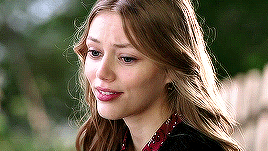
(—) ★ spotted!! ARTEMIS GOLDWYN on the cover of this week’s most recent tabloid! many say that the 24 year old looks like GRACE VAN DIEN, but i don’t really see it. while the ACTRESS is known for being GENTLE my inside sources say that they have a tendency to be DIMWITTED i swear, every time i think of them, i hear the song POCKETFUL OF SUNSHINE by NATASHA BEDINGFIELD {she + her / cis female}
Headline
I'm walking on sunshine, wooah. I'm walking on sunshine, woooah. I'm walking on sunshine, woooah. And don't it feel good!
Stats
name: artemis goldwyn
alias : artemis könig
age: 24
nicknames: tba
date of birth: 1999
place of birth: New York (USA)
nationality : german & american
gender identity: cis woman (she/her)
sexuality: heterosexual
family : scott goldwyn (father), laura könig (mother), madeline kennedy, amity goldwyn, kaya khalid (half-sisters), atticus goldwyn (half-brother)
occupation: actress
career claim: merritt patterson (hallmark credits) & tba
net worth : tba (it's daddy's money)
spoken languages : english and german
positive traits: gentle, energetic, benevolent, flexible, insouciant, loyal
negative traits: dimwitted, gullible, predictable, dependent, passive, shortsided
characters/celebrities inspo: tba
zodiac sign : tba
Bio
Artemis is the quintessential nepo baby. Born to an actor and a model. Never struggled a day in her life. She is very sheltered and lives in her delulu reality.
She was born to superstars Scott Goldwyn and Laura König. An american actor father and a german model mother. Artemis might have been an accident and the product of a short and tumultuous relationship but her parents still loved her. They hated each others but they loved her. Which made for an interesting childhood. Scott and Laura acted like her friends and not her parents. They competed for her attention and love. Each one wanting to be the favourite. In result, Artemis never wanted for anything and was barely faced with the word no. Had she not been good-natured, they would have made a spoiled monster out of her.
Her real parental figures were her maternal grandparents in Germany and her parents' staff. They were the ones who actually had to educate her while Scott and Laura played the good cops. Artemis was homeschooled to be able to follow her parents' lifestyle. She moved around constantly between Germany and the US. While she never went to school, she spent plenty of time with other children : her neighbours, half-siblings and family friends or entourage's kids. A social butterfly, she hated to be alone and would always cling to someone.
Artemis was kind and pretty. She had that going for her and never cared about being anything else. She knew that she was not smart nor athletic nor gifted. She was just the nice one and she was content with that. As it was enough for her parents, she did not need to be more.
At fifteen, she decided that she wanted to be an actress and follow into her father's footsteps. She told everybody about her wish and got mixed reactions. After hearing many people say that she would have it easy and get roles thanks to who her dad was, she decided to use an alias. She picked her mother's name König to try to have an acting career of her own. Her parents were very supportive of her choice, even if Scott wanted to help her. They both agreed to let her do it her way.
Only it did not work out of her. Perhaps she was not hungry or hardworking enough. She did not need the money. Neither did she crave stardom. As a result, her imdb page credits were extra, guest-starring and tv movie roles. She did not really understand why her career was not picking up. The people around her were getting their big breaks. Most of her siblings and friends were doing great but not her. She was stuck playing big city girl falling in love with the lumberjack.
After watching her tenth holiday movies, her dearest daddy stepped in. He had had enough. And her nepo baby era began. Now Artemis gets cast in the movies her father produces or he uses his connections to get her roles. She let go of her alias and proudly introduces herself as Artemis Goldwyn. The media both love the cute father/daughter red carpet moments and slams her for being someone's daughter or someone's sister.
Her entourage does a wonderful job at blocking the negative press, allowing Artemis to mostly live in her perfect little world where everyone love her and is proud of her.
Career
She started her career as Artemis König. She could not land anything major. She was never the lead, nor even the supporting actress. She spent years as pretty girl #2, hospital victim, bully or yoga instructor. Eventually, she got her "big" break with Hallmark. She became a lead in television movies but nothing that would make her step on a red carpet or win an award.
It became obvious that her career was not going to be a prestigious so her father, actor and producer Scott Goldwyn stepped in. Artemis changed her name back to Goldwyn and stars in the movies her father produces. He also uses his connection to get her roles.
3 notes
·
View notes
Text
You Were Red And I Was Blue - CL16
INTRO: meet the cast.
warnings: none.
masterlist | next
-----
BLACKPINK (under Big Hit Music/HYBE)
KYLA. (fc Lisa)
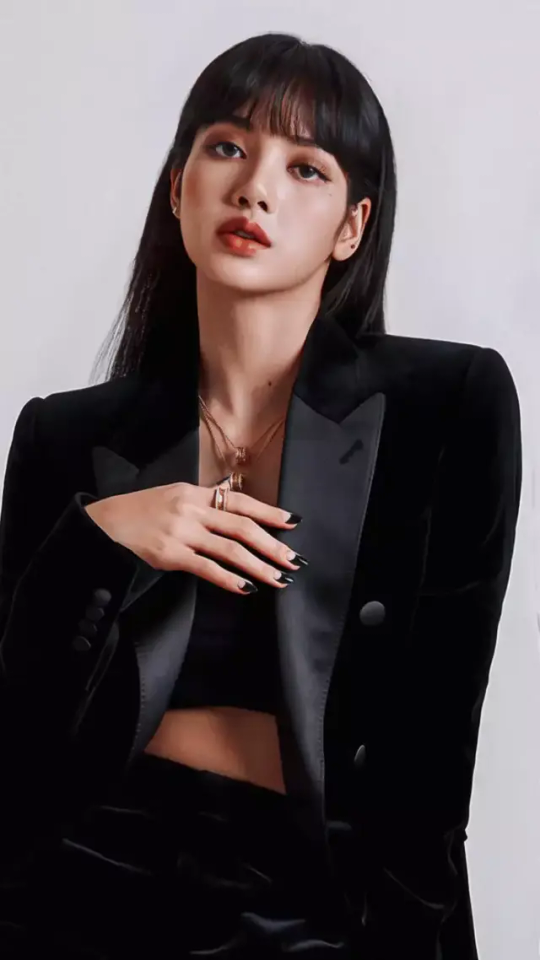


NAME: Kyla Giulia Hwang NATIONALITY: half Korean, half German BIRTHDAY: 18 February 1998 (Aquarius) EDUCATION: high school LANGUAGES: English, Korean, German, French, Spanish, Portuguese, Italian TRAINING PERIOD: 1 year OCCUPATION: member of BLACKPINK, supermodel POSITIONS: leader, main vocalist, main dancer, lead rapper, FOTG, producer REPRESENTATIVE COLOUR: blue REPRESENTATIVE ANIMAL: dragon HEIGHT: 178cm MBTI TYPE: INTJ
LIA. (fc Lia)
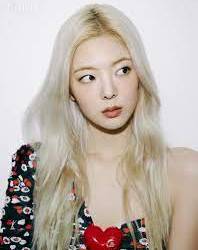


NAME: Choi Ji-su NATIONALITY: half Korean, half American BIRTHDAY: 21 July 1998 (Cancer) EDUCATION: high school LANGUAGES: Korean, English, Mandarin TRAINING PERIOD: 2 years OCCUPATION: member of BLACKPINK POSITIONS: main vocalist, sub rapper REPRESENTATIVE COLOUR: yellow REPRESENTATIVE ANIMAL: sloth HEIGHT: 173cm MBTI TYPE: ENFJ
RYUJIN. (fc Ryujin)

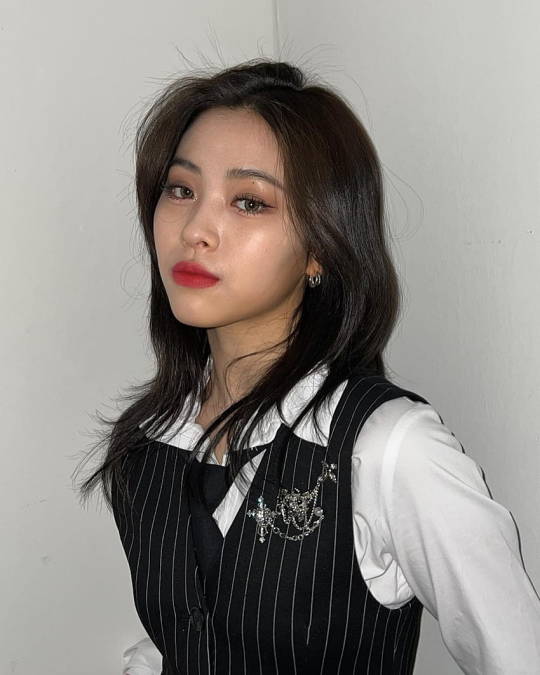

NAME: Shin Ryu-Jin NATIONALITY: Korean BIRTHDAY: 17 April 1999 (Aries) EDUCATION: high school LANGUAGES: Korean, English, Japanese TRAINING PERIOD: 4 years OCCUPATION: member of BLACKPINK POSITIONS: main rapper, lead dancer, sub vocalist, centre REPRESENTATIVE COLOUR: red REPRESENTATIVE ANIMAL: cat HEIGHT: 169cm MBTI TYPE: INTJ
CHAEYEONG. (fc Chaeryeong)
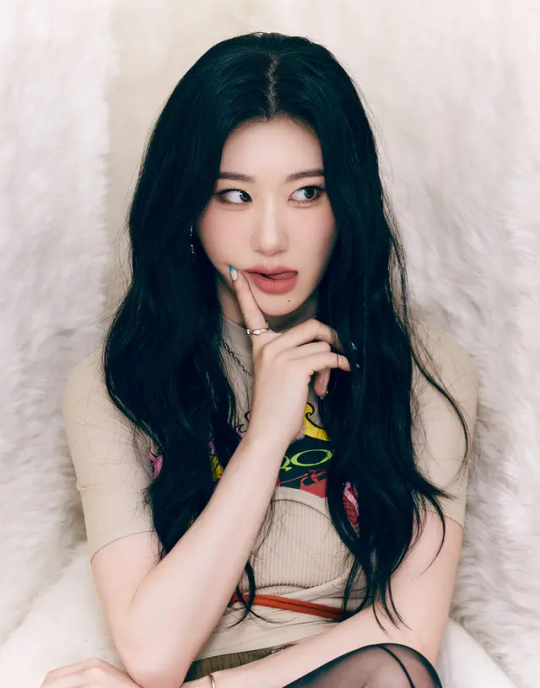
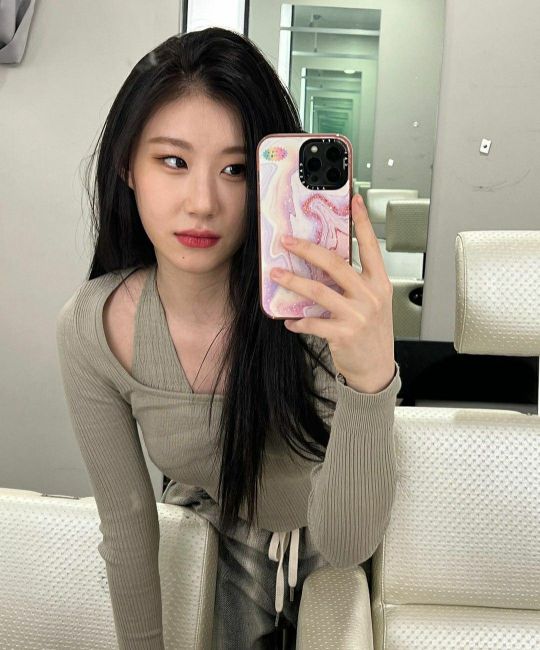
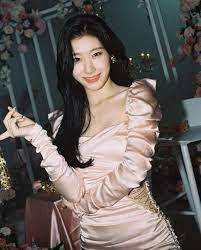
NAME: Lee Chaer-Yeong NATIONALITY: Korean BIRTHDAY: 5 June 1999 (Gemini) EDUCATION: high school LANGUAGES: Korean, English, Japanese, Mandarin TRAINING PERIOD: 5 years OCCUPATION: member of BLACKPINK POSITIONS: main dancer, sub vocalist, sub rapper REPRESENTATIVE COLOUR: purple REPRESENTATIVE ANIMAL: fox HEIGHT: 173cm MBTI TYPE: ISFJ
YUNA. (fc Yuna)



NAME: Shin Yu-Na NATIONALITY: Korean BIRTHDAY: 9 December 2001 (Sagittarius) EDUCATION: high school LANGUAGES: Korean, English, Japanese TRAINING PERIOD: 3 years OCCUPATION: member of BLACKPINK, model POSITIONS: lead rapper, sub vocalist, visual, maknae REPRESENTATIVE COLOUR: pink REPRESENTATIVE ANIMAL: rabbit HEIGHT: 177cm MBTI TYPE: ENFP
~ F1 drivers as themselves
~ minor characters will be introduced later on in less detail
-----
hi everyone! i hope you enjoyed the character breakdown. i would love to hear your thoughts through comments/blogs on this post and posts to come! :)
#charles leclerc#cl16#kpop#f1#charles leclerc x oc#cl16 x oc#charles leclerc imagine#oc#formula 1#ferrari
8 notes
·
View notes
Text
mein Deutsch ist nicht so gut, but I still understand it better than any other language besides english. anyway, a couple of years ago when they FINALLY released most of the international cast phantom recordings on digital streaming platforms, they did make some omissions. no russian cast recording, only the original Japanese cast recording and not the 1992 and 1999 ones, likewise only the 2009 Korean cast recording and not the 2002 one, none of the movie dubs or "studio recordings" (which I'm okay with). but the most glaring omissions are the lack of the dutch cast recording and especially the vienna cast recording.
there are actually 2 german language translations, the 1988 original used only in Vienna and second 1990 one used in Germany (hamburg x 2, stuttgart, essen, oberhausen) and basel, switzerland. the majority of german speakers seem to prefer the 1988 Austrian translation better. the austrian cast album also is a full length album with the majority of the songs and moments represented (1 hour 45 minutes long), while the hamburg 1990 album is highlights only (1 hour long)
many of the song titles are the same between the vienna 1988 translation and the german 1990 translation. for example, "wishing you were somehow here again" is "Könntest du doch wieder bei mir sein" in both translations. The same goes for "all I ask of you" ("Mehr Will Ich Nicht Von Dir"). but there's some major differences as well. "Angel of Music" is "Engel der Lieder" in vienna but "Engel der Muse" in Germany. The Phantom's big solo is "Die Musik Der Dunkelheit" in Vienna but "Der Musik der Nacht" in Germany. "The Point of No Return" is "Der Letze Schritt" in Vienna and " Von nun an gibt es kein zurück" in Germany.
BUT the point of this post is that whoever was putting together "the phantom of the opera global edition" wasn't paying much attention (imagine that, ALW and his Really Useful Group slapdashing something together, that's never happened before 🙄 ). Because even though they decided to only include the 1990 German cast recording, the Vienna recording lives on. Because 2/13 of the song titles are THE VIENNA SONG TITLES. look at this.

4 notes
·
View notes
Text
The Forgers’ fun continues when Loid, Anya, Yor, and Bond return for adventure in SPY x FAMILY Season 2, premiering this October. Streaming only on Crunchyroll, the series will be subtitled and dubbed in all of its territories, with new episodes premiering every week starting on Saturday, October 7 after its broadcast in Japan!
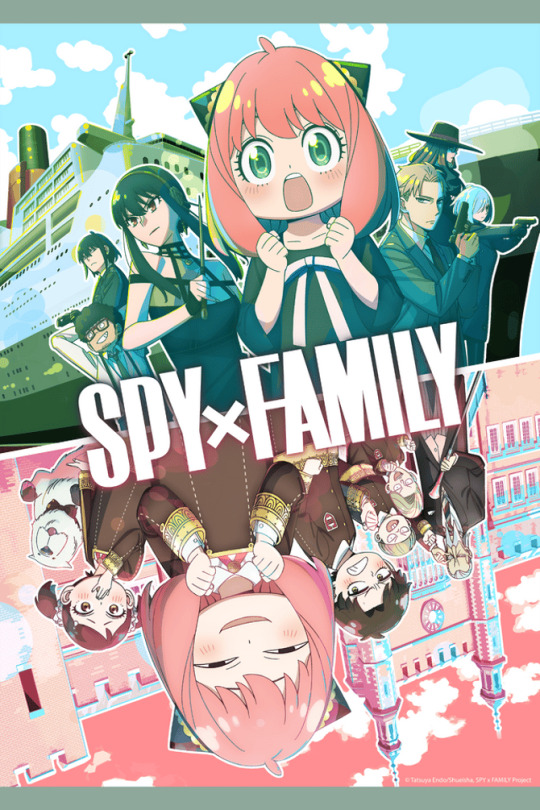
SPY x FAMILY Season 2 is animated by two acclaimed teams, WIT Studio (Attack on Titan; VINLAND SAGA; Ranking of Kings) and CloverWorks (Horimiya; My Dress-Up Darling; the Rascal Does Not Dream series). This season is co-directed by Kazuhiro Furuhashi (1999’s Hunter x Hunter) and Takahiro Harada who formerly acted as assistant director on the series. Additional staff credits include series composition by Ichiro Okouchi (Mobile Suit Gundam: The Witch From Mercury), character design by Kazuaki Shimada (The Promised Neverland), and music composed by (K)NoW_NAME.
Check out the Japanese voice cast and characters below:
Takuya Eguchi as Loid Forger
Atsumi Tanezaki as Anya Forger
Saori Hayami as Yor Forger
Kenichirou Matsuda as Bond Forger / Narrator
Hiroyuki Yoshino as Franky Franklin
Yuhko Kaida as Sylvia Sherwood
Kazuhiro Yamaji as Henry Henderson
Kensho Ono as Yuri Briar
Natsumi Fujiwara as Damian Desmond
Emiri Kato as Becky Blackbell
Ayane Sakura as Fiona Frost
Dubs for SPY x FAMILY Season 2 will be produced in English, Latin American Spanish, Brazilian Portuguese, German, French, Italian, Castilian Spanish, Russian, and Arabic. Dub premiere dates will be announced at a later time.
Not familiar with the series? Learn more about SPY x FAMILY down below:
World peace is at stake and secret agent (aka Loid Forger) must undergo his most difficult mission yet—pretend to be a family man. Posing as a loving husband and father, he’ll infiltrate an elite school to get close to a high-profile politician. He has the perfect cover, except his wife’s a deadly assassin and neither knows each other’s identity. But someone does, his adopted daughter who’s a telepath.
Be sure to watch the official trailer for season 2 below!
youtube
The anime series SPY x FAMILY is produced by TOHO Animation and adapted from the widely acclaimed manga series of the same name written and illustrated by Tatsuya Endo. Serialized in Shueisha’s Shonen Jump Plus, the manga currently has over 31 million copies in circulation and has been nominated for both Harvey and Eisner Awards. SPY x FAMILY has also become a bestseller on The New York Times’ Graphic Books and Manga list and has even climbed into Cricana BookScan's Top 20 Adult Graphic Novels list.
Will you be tuning in to season 2 of SPY x FAMILY this fall? Let us know in the comments down below!
#anime#spy x family#spy x family season 2#loid forger#anya forger#yor forger#bond forger#crunchyroll#wit studio#clockerworks
5 notes
·
View notes
Note
Hi there! Do you have fc suggestions for a significantly younger half sibling (early twenties) to Gabriel Luna? Thank you in advance!
Hey anon! Since he's Mexican and Apache this is the youngest faceclaim I could find to match a sibling, both Lipan Apache too! I'm not entirely sure of his or the following suggestions' ethnic background so these might not be 100% perfect castings!
Marisa Quinn (1980) Mexican and Lipan Apache.
And here are some half-siblings:
Cierra Ramirez (1995) Mexican / Colombian - has younger roles!
Brianna Hildebrand (1996) Mexican / German, English, Irish - hasn’t chosen to label her sexuality but says she is interested in men and women - has younger roles!
Michael Ronda (1996) Mecican / Italian - has younger roles!
Victoria Moroles (1996) Mexican / Finnish, Polish, French-Canadian, Welsh - has younger roles!
Georgie Flores (1996) Mexican - has yougner roles!
Diego Tinoco (1997) Mexican / Colombian.
Ana Valeria Becerril (1997) Mexican.
Marisa Davila (1997) Mexican,
Omar Apollo (1997) Mexican - is gay.
Ryan Jacobs Flores (1997) Mexican - is trans.
Jaylen Barron (1997) Mexican / African-American.
Rico Rodriguez (1998) Mexican.
Brent Rivera (1998) Mexican / White.
Lee Rodriguez (1999) Mexican / African-American.
Macarena Garcia Romero (2000) Mexican.
Zoey Luna (2001) Mexican - is trans.
Andrea Chaparro (2002) Mexican.
Nailea Devora (2002) Mexican.
Samuel / Samuel Arredondo Kim (2002) Mexican / Korean.
Here you go!
4 notes
·
View notes
Text
Thanks for the tag @fitzrove @armandjolras !!
Subjective best musicals list (the order means very little)
1)Mozart! das Musical 1999
It has Nannerl, lots of her, what more's needed. It's also really engagingly plotted and character motivations make sense. And the costumes are pretty and clever. And the cast including understudies are all amazing. I especially like 1999 before the introduction of ich bin musik, but that's just because Wolfgang is so much more pathetic in the old song /hj
Honorary mentions: Hamburg, it's not my cup of tea because it's the begining of the end for Nannerl in German and Austrian productions but it did have a clear vision when the changes were made, and it's still has the same costumes and set. Vienna 2006, it's abridged 1999 with a strong Nannerl and Wolfgang focus. Whatever script gets licenced out for school productions; it seems to contain both Nannerl's old songs and her new ones (not new anymore they were cut from 2015 and all german/Austrian after)and normally you get one or the other (or barely anything Vienna Revival onward ). I've never seen or heard the Plauen & Zwickau production but it gets am honorary mention just for the staging of the final scene in photos.
2)Phantom of the Opera
The costumes are soooo pretty (the simplicity of early west end, and the level of tiny detail in early Broadway especially). It's very very dramatic, I enjoy the amount of shouting everyone gets to do
3)Tanz der Vampire 1997
It has issues from the begining but I love it. Sarah is a really interesting musical character and I'd die for her but she'd probably kill me first. Also the cast <3
4) Dracula(Wildhorn(all except the American production)), not a fan of the storyline in places but i love the songs so much.
5) Rebecca
There's no version I dislike but my favourites are og Vienna (if that is an og Vienna of a musical it's probably my favourite /hj) and st. Gallen. The sets cool and the songs are nice, not the biggest fan of Maxim not being a murderer ngl, but it's a solid musical adaptation
6)The Red Shoes
Major Broadway flop my beloved, the songs are gorgeous, and I like the film it's adapted from.
Again I left this quite late and I'm not sure who 's done it, so leaving the tagged section open to anyone who wants to!
6 notes
·
View notes
Photo
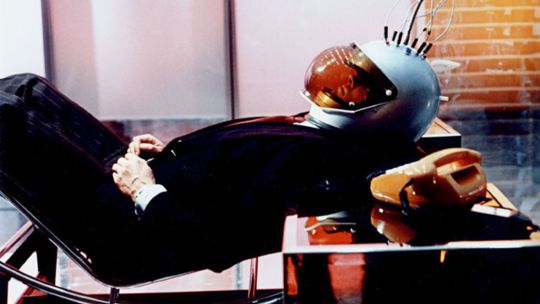
World on a Wire (Rainer Werner Fassbinder, 1973)
Cast: Klaus Löwitsch, Barbara Valentin, Mascha Rabben, Karl Heinz Vosgerau, Wolfgang Schenck, Günther Lamprecht, Uili Lommel, Adrian Hoven, Ivan Desny, Kurt Raab, Margit Carstensen, Ingrid Caven, Gottfried John. Screenplay: Rainer Werner Fassbinder, Fritz Müller-Scherz, based on a novel by Daniel F. Galouye. Cinematography: Michael Ballhaus, Ulrich Prinz. Production design: Horst Giese, Walter Koch, Kurt Raab. Film editing: Ursula Elles, Marie Anne Gerhardt. Music: Gottfried Hüngsberg.
What we call "reality" is, as we all know, a construct, the product of the limitations of our senses. But what if we, too, are part of the construct, put here by some other entity and blinded to the reality that lies beyond the senses? That way lies religion -- "Now we see through a glass darkly...." -- and metaphysics -- now largely dismissed as "asking unanswerable questions" -- but also science fiction. Witness the popularity of a film like The Matrix (Lana Wachowski and Lilly Wachowski, 1999) and its sequels. In fact, Rainer Werner Fassbinder got there more than two decades before the Wachowskis. In 1973 he created a two-part television series, World on a Wire, that aired in Germany, and then became a kind of cult hit via file-sharing on the internet before being restored in 2010 and screened at the Berlin Film Festival. In it, a German research institute has created a simulated world in its supercomputer. The inhabitants of this world have been given consciousness, but only one of them has knowledge of the world outside the computer. He serves as a contact between the programmers and the simulated beings. But then the sudden death of the head of the program puts his second-in-command, Stiller (Klaus Löwitsch), in charge of investigating not only the death of his predecessor but also the suicide of one of the simulated beings. Stranger and stranger things begin to happen, until Stiller learns that he is also a simulation in his own simulated world. He also learns that the institute's simulated world is being used for commercial purposes, something that violates its agreement with the government funding it. As he comes to terms with this knowledge, his increasingly erratic behavior makes him a target for assassins, and his one hope is to find the contact with the level above that's simulating him. Got that? The head-spinning premise of the film comes from a novel, Simulacron-3, by the American writer Daniel F. Galouye, adapted by Fassbinder and Fritz Müller-Scherz. Fassbinder gives it a good deal of his characteristic style in the adaptation: The women in Stiller's world, for example, always wear cocktail dresses, even at work, and rooms are filled with mirrors to suggest the layers of reflected reality in the three levels. It was filmed in 16 mm for television, which means there's some graininess and focus problems in parts of the restored film, but the cinematography is by Fassbinder's frequent collaborator Michael Ballhaus, along with Ulrich Prinz. Löwitsch is very good as Stiller, taking on a kind of James Bondian role, and the paranoid atmosphere prevails even when the plot gets a bit snarled in its own premise.
8 notes
·
View notes
Text
'When Steven Zaillian sat down to write his version of The Talented Mr. Ripley for Netflix, he produced what he describes as “a 500-page movie script.” Zaillian isn’t shy about writing scripts with a certain level of detail — clearly laying out character motivations and reactions, both physical and emotional. It’s a deep-dive approach that is part of what makes Ripley such an immersive watch. Long stretches of episodes are devoted to how exactly scammer Tom Ripley (Andrew Scott) wipes up a pool of blood, or how he negotiates a boat-sale scheme with an Italian counterpart, or how he alters his appearance to trick a detective into believing he’s a different person. The series’ moral ambiguity flourishes thanks to all that methodology, which is exactly the kind of thing Zaillian excels at writing (see the chess gameplay of his directorial debut, Searching for Bobby Fischer; the statistics-reliant maneuvering in Moneyball; or the calculated bribery in Schindler’s List).
If Zaillian hadn’t had the ability to make Ripley this long and sprawling, he wouldn’t have done it. “I felt that I could do things with the book that a movie can’t in two hours,” says Zaillian, whose 2016 TV debut, the HBO miniseries The Night Of, won five Emmys out of 13 nominations. The eight-episode Ripley — originally ordered by Showtime before ending up on Netflix — rejects the sunny luxury of previous depictions of the Italian coast (as seen in 1960’s Purple Noon and 1999’s The Talented Mr. Ripley). Its black-and-white cinematography is bold, angular, and unsettling (thanks to cinematographer Robert Elswit, who previously worked with Zaillian on The Night Of, alongside other returning collaborators like composer Jeff Russo and casting director Avy Kaufman), which ends up serving Scott’s version of the sinister orphan well. Unlike the rakish suave of Alain Delon or the corn-fed sincerity of Matt Damon, Scott’s Tom is more mean, even dispassionately alien, in how he disposes of Dickie and Freddie. In the series’ stark color scheme, the bloody damage Scott inflicts on these men and the lonely locations in which he abandons their bodies make both Ripley the character and this portrait of his ascension feel like Patricia Highsmith’s text filtered through a German Expressionist fever dream.
Much of Ripley’s distinctness comes from its mimicry of Zaillian’s own life (aside from the serial-killer thing). His transfixed reaction the first time he saw a piece of Caravaggio-style artwork became Tom’s, too. Kenneth Lonergan, a longtime friend of Zaillian’s, pops up in an unannounced role as Dickie’s self-made father, Herbert Greenleaf. Shadows and darkness are more intriguing to Zaillian than sunny beach weather, which rarely shows up in Ripley, though it defines the look of previous adaptations. But maybe only a director who would confess to hating blue skies is capable of appropriately forefronting the murk of Tom Ripley.
Ripley is shot in black-and-white. You’ve said you consider the book the “novelistic version of film noir.” Did classifying the story in that genre lead you to the color palette?
That’s part of it. The other part is because the story itself is a rather dark and sinister story. It’s not impossible, but it’s difficult, to shoot Italy in color without having it look like a postcard. We shot in the winter; the whole story takes place in the winter. I didn’t want blue skies; I wanted cloudy skies, rain and rain-glistening streets. I had that look in mind from the beginning.
There’s a moment when Marge is writing Dickie a letter and says the tomato plant he gave her is thriving, and the series cuts to a shot of the plant completely dead. I laughed. It’s Tom Ripley by way of The Cabinet of Dr. Caligari. There is something so unsettling about seeing Italy this way.
Cinematographer Robert Elswit tells this story that I forgot, which is — Robert knows how much I hate clear blue skies. But when we were shooting the scene on the beach when Tom meets Dickie and Marge, there was nothing we could do about it. It was sunny. I wanted to put the camera way up high and get a shot of them lying on this beach. As I was doing that and had Tom walk by, his shadow fell across them. And Robert said, “Well, that never would have happened with an overcast sky. There are some good things about a clear, sunny day.”
Were there any approaches you and Robert used to amp up the visual contrast of the show?
There was a standing rule that whenever we were shooting outdoors, we had the ability to wet down the streets, whether it was daytime or nighttime, because it instantly brings those film-noir images to mind. And because it’s beautiful; it’s a little better than a dry street.
I’m curious about the Caravaggio of it all, and how the Italian painter and his work entered into the adaptation.
The first time I went to Italy, I went to a small museum in Perugia, and I was looking at this painting that had drawn my attention. It didn’t look like any other painting in the place. There was no one in the room except a museum guard and me. After watching me stand longer before this painting than any others in the room, the guard came up behind me and said exactly what the priest says in the show — “La luce, sempre la luce”; “The light, always the light.” He was talking about the chiaroscuro of the painting. It was not a Caravaggio, but a painting by a peer or next-generation artist influenced by him — a Caravaggisti. So I started seeking out all the Caravaggios in Italy when I was there. When I was writing the script, I put that in, and it developed from there. It became a sort of motif. I felt that Tom was somebody who could appreciate art and would do something like that.
And at a certain point, I said, “Well, let’s show Caravaggio himself.” He murdered someone 350 years ago. You may think you’ve made a mistake when it says, “Roma, 1606,” but I thought people would keep up with it. We went to the paintings in the cities we were shooting in. In Naples, we went to Misericordia Church, which is where Seven Mercies is. In Rome, there’s a triptych of three paintings in San Luigi dei Francesi, which I’ve seen before. In terms of the ones that he would look at in books, those were the ones that he hadn’t seen in person that I thought he should see — some of the ones that I liked.
We start the series with Tom dragging Freddie’s body down the stairs and then we go into the details of his life in New York. Was establishing Tom as a killer always your beginning?
It wasn’t. In the scripts, it starts in New York City. During the editing, I had the idea to start there as a little prologue. That’s one of the things that happens when you have the time in post to think about things, rethink things. We had almost two years in post.
Something I like about that beginning is we see the cat Lucio for the first time. I remember thinking, This cat knows what’s going on.
The only witnesses to Tom are animals and portraits and things that can’t testify. A goat sees something. And the cat. The cat sees everything.
The Tom and Freddie dynamic feels shaped by a shared loathing that’s potentially mixed up in their sexualities. Freddie is played by Eliot Sumner, who is nonbinary but male-presenting and implied to be gay in the series. I’m curious about the intention behind Eliot’s casting, and if there was a layer to the performance that you wanted to reflect our questions about Tom’s sexuality.
Not really. Eliot was cast from an audition tape, one of 200 actors who came in for that part. Most of them played the part as a kind of version from the book, although some of them were playing it almost like a copy of Philip Seymour Hoffman. And Eliot did something completely different, which was sophisticated, quiet, British. And I thought, This is it. Why can’t this character be the most sophisticated person in the story? Which I feel Freddie is, and that makes him a bigger challenge and a bigger threat to Tom, if he’s not just some sort of loud, obnoxious American character.
The moment with the Ferragamo loafers, when Freddie realized Tom was wearing Dickie’s shoes, really threw me. As you said, this version of Freddie is quiet, but he’s taking inventory of everything.
Eliot said that and did it exactly that way in the audition — without looking, is what I mean. And I thought, That is so smart, to take in the shoes before. I won’t bother showing Freddie taking in or seeing the shoes, but he does. It was a joke on the set when I’d say, “Let’s get another shot of Freddie’s shoes. Let’s get another shot of Tom putting on his Ferragamos.” It’s the thing that starts the whole sequence between these two, is this lying. So there’s a lot of shots of the shoes.
This series has such a collection of wealth signifiers: the loafers, the Brooks Brothers robe, the gold cigarette case, the fridge, the Picasso. Were they scripted to that level of detail?
They were scripted — the pen, the Hermes Baby typewriter. The Picasso was chosen while we were filming, and we had to get it painted and the rights to use it from the estate. For me, these items are important, and they’re not important because they signify wealth to Tom. I don’t think Tom looks at them that way. I think the people that own them look at them that way, like a status symbol. But Tom just appreciates them for the beauty in them. He’s attracted to them because he likes to look at them — even the ashtray. He just likes to have nice things around him, beautiful things.
Andrew said that the series has a “very light message” that “everybody is deserving of beauty and arts in the world. It’s not for a certain section of the community. It’s not just for the rich … We have to understand that it’s about class and money and morality and fairness.” I’m curious if you agree with that — if you were aiming for someone to walk away from the series with, if not exactly an eat-the-rich ideology, more of a spread-the-wealth ideology. Did you create the series with a political angle as an intention?
I wasn’t really thinking about that. I did think that Tom appreciates these things in a way that the rich don’t. The rich feel entitled to them, and they don’t see the inherent beauty in them. And he comes from a place where he does.
I want to ask you about Dickie and Marge, who were more homophobic than I expected. Can you talk a bit about that characterization of them?
I never really thought of them as homophobic. For Dickie to say, “Marge thinks you’re queer,” I don’t think that’s homophobic. I think that’s just what she thinks. At one point she says, “I don’t know what to think of Tom’s sexuality. I don’t think he’s normal enough to have any sort of sex life,” so she doesn’t know what’s going on in that regard. I think Tom has never really loved anybody other than himself. But the closest he comes is Dickie — maybe he likes him, he might even love him. And I think Dickie finds something attractive about Tom as well.
Andrew has said he doesn’t see Tom as a villain. You’ve said that you don’t think about generating sympathy or empathy when you’re writing characters. But I thought the series was very pointed about keeping us in Tom’s perspective when he does things I perceived as humorously mean, like when Marge is getting back on the train and Tom very energetically says “bye” to her and then throws her scarf away. How much of that dark comedy was intentional?
It’s all intentional, yes. I love the relationship between Tom and Marge. At one point I said to myself, I think they would actually be very good friends if they didn’t happen to be in love with the same person, because they’re very much alike. You see this relationship changing when Marge starts to see the advantage of Dickie being missing and her starting to get some attention for that. Tom doesn’t really appreciate it. The scenes with them in Venice together I just love.
I liked how much friction there is in their arguments. It felt like watching a duel, each of them trying to get the last word.
And it’s the thing that nobody else seems to notice with them. If there’s a scene between the three of them — Dickie, Tom, and Marge — you’ll notice Dickie’s always looking down or looking off when those looks happen between them.
Dickie’s death is a huge moment. It seems spontaneous, but it’s such an involved scene — Tom attacks Dickie and collects items from his body, then ends up in the water himself when he tries to dump Dickie’s body, and then weights the boat and sinks it. What went into that?
That particular sequence probably took a week to shoot. Did we talk about it? We didn’t really talk a lot about anything. If a question would come up, I’d try to answer it, but I felt like the actors knew who they were. The scripts I write aren’t shy about mentioning what a character is thinking or feeling. I don’t write camera angles, but I do write that. In that particular case, Andrew had an awful lot to do. That was just a matter of committing it to memory and then doing it, and making it feel as if he’s figuring it out as he goes along, which was very important to me both in the sequence with Dickie and then later with Freddie — to show that he is not a professional killer. He’s actually no better at it than we would be. How do I get this guy out of a boat? becomes a huge problem. We shot that in a tank. How do I get this guy downstairs? becomes a really elaborate problem. Those two long sequences were in the script — they were quite long in the script.
For the most part, the series does not use handheld. But there is a moment when Tom is dragging Freddie’s body out of the apartment that we see one handheld shot, right?
It’s sort of one setup. I did shoot it non-handheld, as wide, as well. I like setting the frame and having the action take place in the frame. But when Joshua Raymond Lee, who is one of the editors, used it, I said, “Oh, I don’t think I want to use it. It would be the only handheld shot in the whole series.” And he said, “Well, maybe that’s a good reason. I think it looks really good here.”
I liked it because it helped make that moment feel unplanned, like another instance of Tom trying to figure this all out. Beyond the camerawork, was there a specific scene or moment where Andrew surprised you with a contribution to this version of Tom? I’m thinking of his “I like girls” line, which Andrew delivers very flatly.
Everything in that scene is for that line. And when there is a line like that, where it is the whole point of the scene, I’ll keep doing it until I hear it. He had a lot of patience with me in that regard. And when I heard it, I said, “Okay, good, we’re done with this scene.”
I mean, everything surprised me. I was constantly surprised daily by the choices he would make. He’s also really good at the process of things. If he has to forge something, he’s going to forge it. If he’s going to have to write a letter, he’s going to write it. If he has to climb from the water into a boat, which is extremely hard — it seems like it’s easy; it’s not — he’s going to do it, and I’m going to keep filming it.
There are scenes in the series where we are supposed to doubt Tom’s sanity a little bit. I’m thinking about the Italian language tapes, where the dialogue he’s learning feels very particular to him: “How much money do you need?” Or when he sees Dickie’s ghost. Or when he imagines Bokeem Woodbine’s detective listing all of his crimes. What should we take away from those scenes?
It’s more about a glimpse into his mind. But not to say, “Oh, he’s crazy.” There were actually more of them in the scripts. But the ones we do see include when he’s writing a letter to his aunt Dottie. He imagines her at the dentist. He imagines the people he doesn’t like being in some uncomfortable situation.
And it was important to me that what he imagines is something that he’s actually seen. If he’s going to imagine a banker in a bank, it’s a bank that he’s been to; if he’s going to imagine a private detective accusing him of something, he imagines him in what he imagines a private-detective office should look like, which is something straight out of a movie that he’s seen. The locations of these — I don’t know if I would call them a fantasy — imaginings of people talking to him are intentional.
In the last episode of the season, we’re introduced to John Malkovich’s character, Reeves, who sees Tom for what he is, and Tom sees him for what he is. They describe themselves as “art dealers,” and Reeves is the closest thing Tom has to an ally. Did you write the role for Malkovich, who played Tom Ripley in 2002’s Ripley’s Game?
He doesn’t appear in the first book; he’s introduced in the second book, Ripley Under Ground. More than anything else, I thought it would be fun to see him in this one, and figured out a way he could actually serve some sort of plot function. It was as simple as writing to John and telling him, “It might be fun to do this, and I hope that if there ever is another one, if we do any more of these books, that you’d want to do that too.” And he said, “Yeah!”
Was Kenneth Lonergan cast as Herbert Greenleaf in a similar way? You and him working together again was a mini Gangs of New YorkZaillian, Lonergan, and Jay Cocks co-wrote the screenplay for Martin Scorsese’s 2002 film Gangs of New York reunion that I was very excited about.
Kenneth, I’ve known him for a number of years, and I’ve always liked his performances in his own movies. What I didn’t want was what I would call your standard blue-blood aristocratic rich guy. I wanted somebody who felt more like a working man who made his money. That would be more meaningful in terms of the story. It was just, “Hey Ken, maybe you want to do this.”
At the end of the season, after Tom has convinced everyone that Dickie died by suicide and he’s reading the letter he forged that he’s passing off as Dickie’s last words, Herbert looks so guilty when he hears who he thinks was Dickie describing his own paintings as “worthless.” But they are pretty terrible. How did they come into being?
We had an Italian artist in the art department, Valentina Troccoli. She did all the Dickie paintings. She also did the Caravaggios; there’s a scene where we’re in his atelier and we see a couple of his paintings in the process of being painted. She also did the Picasso. She’s really something. For the Dickie paintings, production designer David Gropman and I initially had this idea that we would put up easels and everyone in the art department would try to paint badly, and that it might be better if it wasn’t a professional artist trying to paint badly, but somebody who just painted badly. It turned out that the professional won the contest. She was able to do it in a way that didn’t look ridiculous but at the same time was not good.
Was there anything from the Ripley books that you wanted to adapt in this series but that you didn’t get to?
No. But if somebody wants to do it again, there’s no shortage of material. She wrote five books about Tom Ripley, so there’s a lot there. My favorite of those books is called Ripley’s Game. I just love that story.'
#Steven Zaillian#Robert Elswit#Patricia Highsmith#Ripley#Netflix#Andrew Scott#The Talented Mr Ripley#Freddie Miles#Eliot Sumner#Dakota Fanning#Marge Sherwood#Dickie Greenleaf#Johnny Flynn#John Malkovich#Reeves Minot#Kenneth Lonergan#Avy Kaufman#Jeff Russo#Caravaggio#Picasso#Philip Seymour Hoffman
6 notes
·
View notes
Note
Top 5 movies you've watched
… I have forgotten every movie I’ve ever watched -_-; Well, no, but you’re literally getting whatever memories float up first here.
80s fantasy. This is a total cheat, but my entire childhood was 80s fantasy movies, and they’re a genre I miss so much. They had a whimsical-ness (whimsy, the word is whimsy, forgive me I’m not awake yet) and a faint joyful ridiculousness that you don’t get in fantasy any more, and that I miss so bad. Labyrinth, The Dark Crystal, Krull, Legend, Conan The Barbarian, The Neverending Story, Ladyhawke … More specifically of those, The Last Unicorn is one of my forever movies. It’s gorgeously animated, it’s such an incredibly thematic story, and Molly Grue is the best character ever created.
The Innocents (1961) is quite possibly my favourite horror movie of all time (competing mostly with Picnic at Hanging Rock (1975) and various Universal/Hammer films). It’s so eerie. The lake scene is one of the single scenes in cinema that sticks with me the hardest. It’s not horror as in there’s a monster, it’s horror as in your own mind is breaking down. In broad daylight, full gorgeous sunshine. It’s amazing.
Dark City (1998). I love noir (Big Sleep, Raymond Chandler) and I love German Expressionism/Futurism (Metropolis, Dr Caligari), and I love science fiction, and Dark City is an utterly fantastic mix and merge of all three in a very 90s sort of way. The themes of memory and personhood and individuality, and the expressionistic motif of the shifting, surreal, night-shrouded noir city, and the battered character of Dr Schreber struggling to secretly fight his captors/employers … It had a lot going for it. (See also: The Crow 1994, Strange Days 1995, The Breed 2001, for movies with a similar late-90s/early 00s, borderline cyberpunk, horror, exploring personhood sort of movies, they’ve all got a very similar vibe, and I enjoy all of them)
The two movies I can quote top to bottom are Young Frankenstein (1974) and The Mummy (1999), which will tell you I enjoy comedic takes on classic monster movies where the humour is warm and well-meaning and fun. I watched Son of Frankenstein (1939) because of the character of Inspector Kemp in Young Frank, I wanted to see the original he was based on, and Inspector Krogh did not disappoint. And the main cast of The Mummy, all of them, are some of my favourite fictional people, full stop, the end. Heh.
What to finish on … The first thing to pop into my mind is Arsenic and Old Lace (1944), because we’re on a theme of horror comedy, and you cannot beat AaOL for zany gallows humour. Should I jump genres again, though, to give a broader spectrum? For tense action thrillers, I love Assault on Precinct 13 (John Carpenter, 1976, do not speak to me about the oughties remake), the pacing and tension in that movie are fantastic, and the bond that develops between Bishop, Wilson and Leigh while under siege is amazing …
I’m cheating again, though. I think I’ve mentioned far more than 5 movies. So. We’ll go with what we’ve got so far?
14 notes
·
View notes